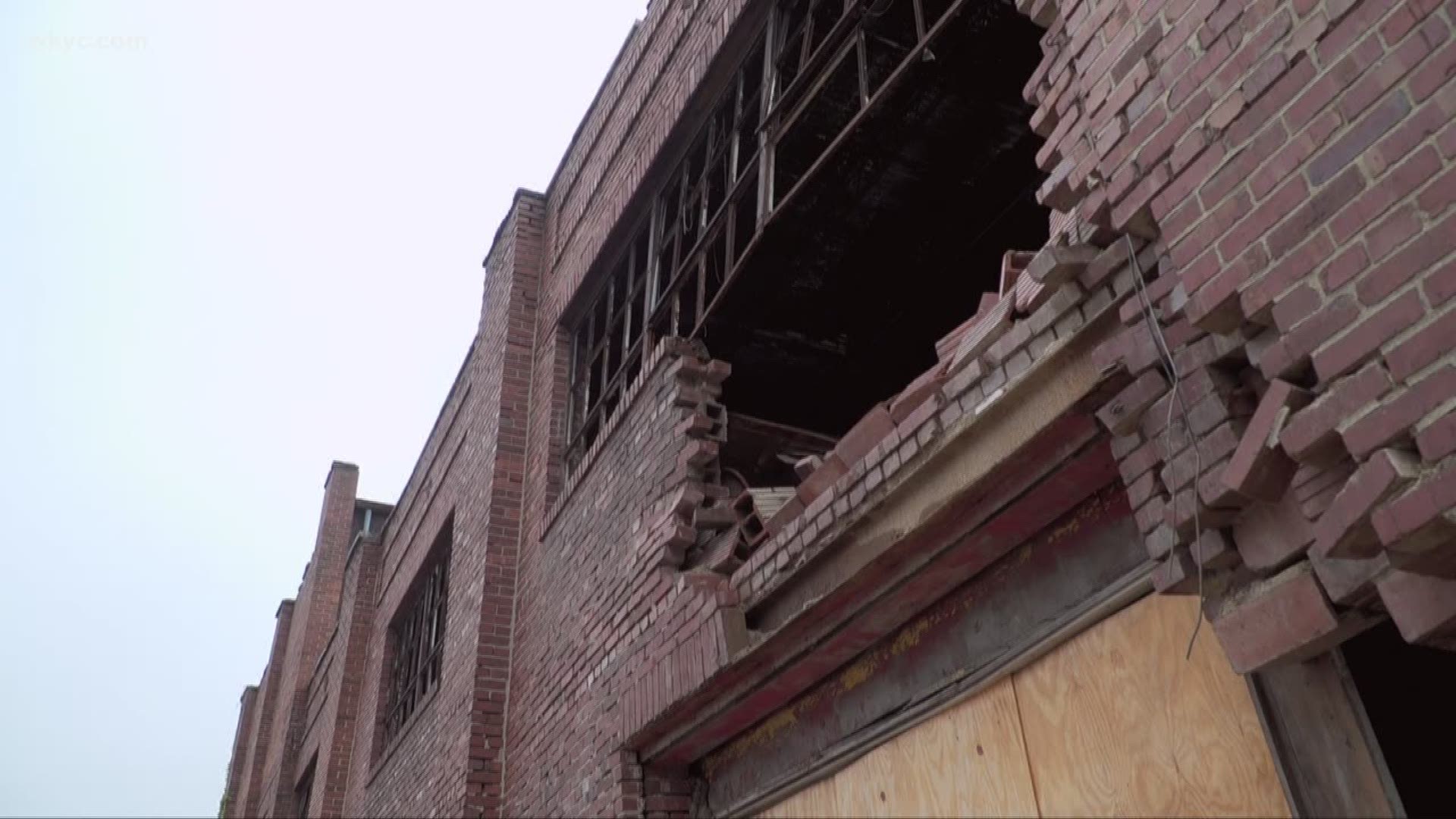AKRON — "It's ugly. It's really ugly. You know it catches fire," said Daren Lewis when we asked him about the eyesore in his neighborhood, 355 Morgan Street.
Jasha Walker put in her 2 cents as well. "It's got no doors. It's weird. I don't really like it. I'm scared to walk by it."
The vacant structure has a nickname. It's called "Hotel Haven" by neighbors. But if anything 355 Morgan is a have for garbage and seedy behavior.
"It's really a poster child for industrial blight," Akron Mayor Daniel Horrigan said when we met with him to talk about Akron's vacant buildings problem.
Police and fire crews have responded 36 times, in just the past year, to 355 Morgan. The owners are more than $233,000 behind in taxes.
And 355 Morgan is just the tip of the iceberg. It's just one of some 500 commercial and industrial properties in Akron that have seen better days.
Often these empty shells invite crime and disrupt economic progress.
Mayor Horrigan hears it all across the city.
"Every ward and every area in the city has been impacted by a vacant commercial structure that somebody has not taken care of," Mayor Horrigan said.
The problem is not just a safety concern, but a financial, economic and infrastructure concern as well.
Last month, Akron City Council voted to create a vacant building registry to catalog the commercial and industrial properties that need attention. There are five alone, along a stretch of Romig road that we visited. Eventually, they could be demolished or reimagined and redeveloped.
"We did look at Toledo, Sandusky and other cities across the Midwest, to say, 'what are you doing to be able to do this stuff?'"
About 70 miles northwest, Sandusky's success story caught Akron's attention.
"We started out in 2012 with 115 buildings. To this day, we are down to 16 structures. And by my prediction, by the end of the year, we will be down to single digits," said Steve Rucker, who is Fire Marshal for the city of Sandusky. Rucker spearheaded Sandusky's vacant and abandoned building program.
"Of all the things I've been involved in, in my life, this is probably one of the most successful," Rucker added.
His chief concern was for his officers when they went into these vacant buildings, many of which had been ignored for years.
Under Sandusky's program, once a building has been vacant for 30 days, it goes on the list. Owners must pay $400 a year to register, which doubles annually and maxes out at $6400 every year from 5 years on.
The escalating fee structure is a motivator. Take care of your property. Fill it up or maybe, tear it down.
"That's something we don't like to do and is really meant to be a last resort. But what trumps that is health and safety issues," said Matt Lasko, City Development Officer for the City of Sandusky.
Sandusky has seen unusual success because it's also invested in incentives for economic development.
In the program's 6 years, there has been $100-million of outside investment. That's helped create 30 new businesses and 400-thousand square feet of redevelopment in downtown alone.
Included in the mix, a new city hall, part of a mixed reuse of the former Cavalry Temple Church space. And it's city manager Eric Wobser's new office too. If Wobser's name isn't familiar, his influence should be. Until 2014, he was part of the turnaround in Cleveland's Ohio City.
"These buildings are coming back to life and it's not only the bricks and mortar investment that is saving them but its the spirit of the people who are able to occupy them because they were saved," Wobser told us.
Another long-vacant building on Water Street is now the boutique Hotel Kilbourne.
"The community was hungry for all of this. And they just needed the people to come in that had the guts to pour their blood, sweat, and tears into it," said Kilbourne owner Nikki Lloyd.
Akron's hungry for progress too and hopeful this borrowed idea could work to reinvigorate its neighborhoods some 70 miles southeast. They are giving owners of empty buildings 6 months to register, then fining them based on the building's size.
In case you are curious, Cleveland doesn't have a registry for vacant commercial properties, which at last survey in 2015, counted more than two thousand structures.


